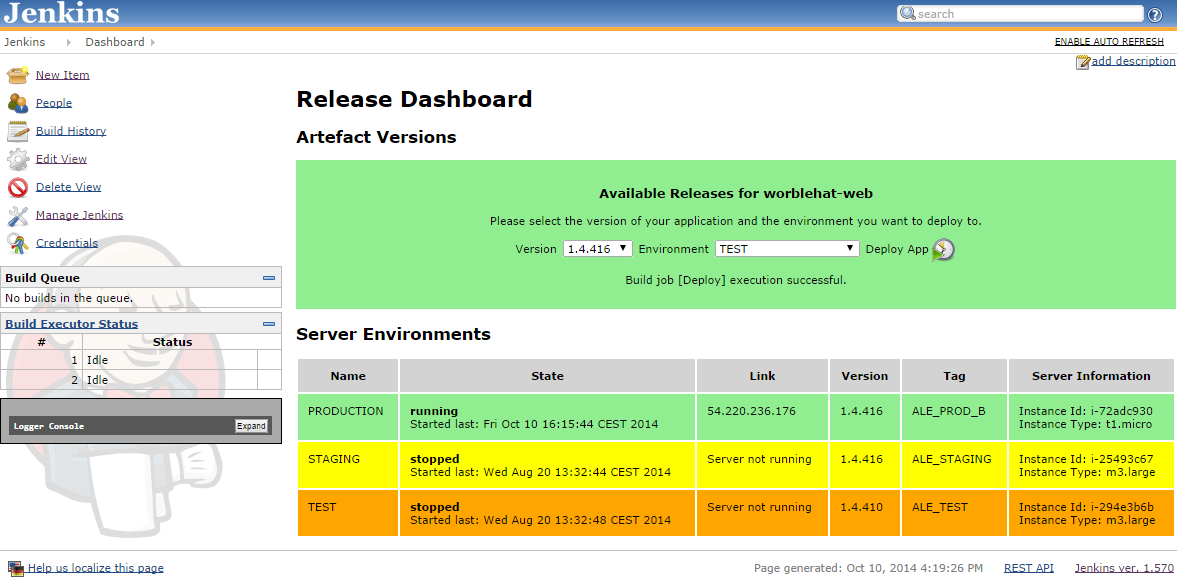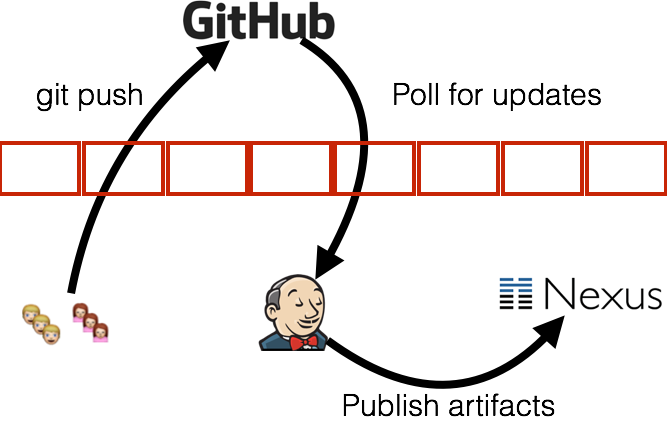

- #Jenkins nexus plugin how to
- #Jenkins nexus plugin install
- #Jenkins nexus plugin code
- #Jenkins nexus plugin password
- #Jenkins nexus plugin series
Security Note In a home lab generally you’ll only configure 1 or 2 users, however you should always follow the principle of least privilege, especially since jobs will likely have access to credentials for other systems and services, and an error in code could have unintended effects. This will take a while to download depending on your internet speed and system. You can always add or remove plugins later. I recommend just installing the recommended plugins first up.
#Jenkins nexus plugin password
Initial LoginĮnter the password that we captured from the file at /var/jenkins_home/secrets/initialAdminPassword after installing Jenkins. You can now access jenkins at in your browser. You can now close the container window and proceed to configuring Jenkins. It’s clearer to manage than raw UIDs.Ĭreate a directory somewhere on your NAS, for me it’s in a Shared Folder dedicated to Docker. Security Note Ideally you’d create a jenkins user and group with matching UIDs for a more permanent solution. This is not ideal, as it usually has some complications around permissions as seen here, but it’s safe and workable. Unfortunately the synology docker UI doesn’t support docker volumes, and instead uses bind-mounts.
#Jenkins nexus plugin install
You can also install Jenkins directly from the Synology Package Center, however running it in Docker will keep it self contained and give you more control over which version you install.Ĭonfiguration is mostly straight forward with the exception of a small permission change required on the jenkins_home directory. It’s always on, reliable, and already has backup tasks configured, so it’s a perfect place to host it. Running the Jenkins Docker image from a Synology NASĪt home I run a Synology DS918+, so being able to host the docker container on this is really convenient. Now we have a working container, you can move onto initial configuration. Installing Jenkins is the same process on Ubuntu and Raspbian, and likely all debian based distributions.įirst we add the Jenkins repository to apt, including the associated key. Where would you like to setup your Jenkins Master?Ĭlick an option below to jump straight to the relevant instructions. Ideally once we’ve setup Docker agents your projects will define all prerequisites and dependencies which will be built into the Docker images or installed during the build process. You can add the build tools and prerequisites to fit your projects and needs later.
#Jenkins nexus plugin how to
I won’t be showing you how to install a JDK, maven and other java related build tools. This means that we don’t need a particularly powerful machine to run this on, however this is where job artifacts (built projects) will be stored, so make sure you have enough storage for your intended projects.

We’ll be configuring the Jenkins master purely as a tool for coordinating agents, and disabling local execution of jobs. Jenkins Master requirements & setup options This means you can mix architectures and operating systems freely in this setup, all that matters is that your jobs are compatible with an environment available on an agent or slave that you’ve configured. It is focused on running user defined tasks and pipelines. Jenkins is written in Java and runs in many environments. I’ve chosen Jenkins for this since it’s free, open source, and incredibly flexible.

All of these tools have strengths and weaknesses, but in general you can accomplish the same tasks in all of them. Some paid, some free, some cloud hosted, some self hosted. Part 5 (Coming Soon) - Setting up Docker for on-demand windows agent creation.Part 4 - Setting up Docker for on-demand linux agent creation.Part 2 - Setting up Linux Agents on Ubuntu and Raspberry Pis.Part 1 - Setting up the Master (this article).I’ll make a note anytime a security assumption or choice is made that should be more carefully considered in a production environment. Security Note This guide is focused on a home lab environment so certain security principles will not be rigidly conformed to.

I’ve aimed to keep it modular so you can pick how you want to run your master Jenkins server, and choose any or all of the different agents for your environment. As a result this guide is going to cover many different options. I embarked on creating my own home lab to automate tasks on a few side projects as well as a way of filling in some knowledge gaps of mine, specifically aiming to learn windows containers and Docker on ARM architectures, like a Raspberry Pi. With this home lab you can turn any old or cheap computers into an environment to automate tasks for your side projects, sharpen your CI/CD skills, and prototype new project pipelines.
#Jenkins nexus plugin series
Are you looking for a project this holidays? Did you get a Raspberry Pi for Christmas? Why not setup a home lab for CI/CD with Jenkins? Over the next week or so I’m going to output a series of tutorials aimed at setting up a comprehensive home lab environment for Jenkins.


 0 kommentar(er)
0 kommentar(er)
